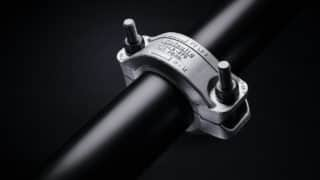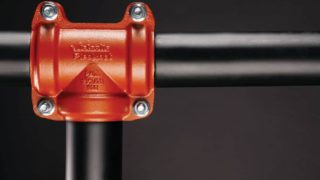Posted on September 6, 2018
Do mechanical pipe couplings outperform other pipe joining methods in fire endurance testing for pipe fittings?
Yes. Mechanical pipe couplings tend to outperform other pipe joining methods in fire endurance testing for pipe fittings because they have a unique advantage over them.
There are two lines of defense when it comes to exposing pipe couplings to extreme temperatures
- the coupling housings
- the gasket (aka the seal)
Victaulic pipe coupling housings are cast from ductile iron in accordance with ASTM A-536 of material grade 65-45-12. Director of Global Regulatory Compliance Len Swantek wrote in a joint white paper with Catsy Lam, Material Sciences Technical Leader:
“These housings are capable of withstanding direct fire exposure to temperatures in excess of 760°C (1400°F) with no adverse effects to their structural or metallurgical attributes.”
The structural composition of the pipe coupling housings protects the internal gasket from the flame and intense heat. This leads into the second line of defense– the gasket. The pipe coupling’s gasket design and formulation provide superior performance regarding its resistance to extreme heat. Such vital characteristics including the compound formulation, manufacturing process, as well as the gasket material properties and design all contribute to durability under direct fire exposure.
VdS’s Fire Endurance Testing for Pipe Fittings
Products are tested to determine if they meet global codes and standards. An example is the fire exposure qualification test conducted by VdS Schadenverhutung GmbH in Germany. The test joint is engulfed in a concentrated fire and must withstand direct flame temperatures at or near 800°C (1470°F) for 15 minutes. Similar fire exposure tests such as API-607 and UL-852 are also used to qualify new seal materials and pipe coupling designs intended for high hazard applications.
Did the Victaulic pipe coupling smoke the qualification test? Click here to read the technical paper.
Source:



